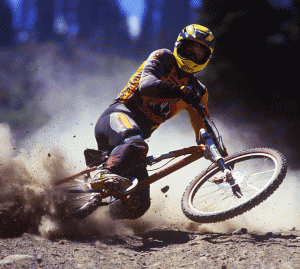 Let’s talk about that old workhorse, that four-letter word, that indispensible element in every sentence: the verb.
Let’s talk about that old workhorse, that four-letter word, that indispensible element in every sentence: the verb.
So what is a verb, and how do you use it? Perhaps you remember your English teacher telling you, “A verb is a word that expresses action (throw, run, examine, read, write), or state of being (is, are, was, seem).”
In a typical sentence (not always the most useful, but certainly the most common), the verb comes between the subject and the object, e.g., Mary (subject) throws (verb) the ball (object). You can also think of it as who (subject) does what (verb) to what (object). This of course, is for an active sentence. More about that later.
While we could talk about the differences between types of verbs (there are about a dozen types), Let’s concentrate today on how to use verbs for effect.
1. To add spice, and enhance your writing with greater clarity, use specific verbs, verbs that go a long way to creating the picture you want your reader to “see.” Paint a picture for your reader.
You could, for example, say,
“Jerry went down the hill.”
To be a bit more specific, you could say,
“Jerry ran down the hill.”
A bit better, but let’s be even more specific,
“Jerry raced down the hill.”
2. You can paint an even clearer picture with a step-by-step description, adding additional “picture verbs,”
“Jerry raced down the hill, tripped, stumbled, caught himself, and kept running as if the devil himself were about to devour him.”
In this case, we’ve used a couple of words with verbs to help paint the picture – “himself” with caught, and “kept” with running, and then the “as if” phrase to complete our picture.
You’ll note that in the above example, we’ve added words as we paint the whole picture for the reader.
3. Frequently, just exchanging one verb for another (“ran” for “went,” and then “raced” for “ran” in the above example) works well, and is all that is needed to paint a sufficient picture for more concise business writing. For example, you could say:
George sat at his desk.
Or
George slumped at his desk.
For tighter writing, you may want to avoid verbs like is, was, are, were…. E.g.,
MaryAnne is a person who plans for unexpected events.
Or
MaryAnne plans for unexpected events.
4. You could use a verb that “shows”:
Barbara is taller than her co-workers.
Or
Barbara towers over her co-workers.
5. Finally, that familiar grammar checker item: passive verbs. An active sentence is one where someone/something is, will, or has done something – an actor and an action, e.g., “Alex grasps the situation.” A passive sentence is one where someone/something is being done to, e.g., “The situation was grasped by Alex.”
Note that the active sentence in the above example contains four words, while the passive sentence must contain six words to provide the same information.
Passive sentences tend to be longer, slower moving, and impersonal. For better comprehension, easier reading, and fewer words, use active verbs to create active sentences.
We invite you to subscribe to our blog, and to our newsletter.
Gail Tycer offers business writing workshops and presentations, executive coaching, consulting, and writing services. To discuss how we can help, call Gail at 503/292-9681, Toll-free at 888-634-4875 or email gail@gailtycer.com